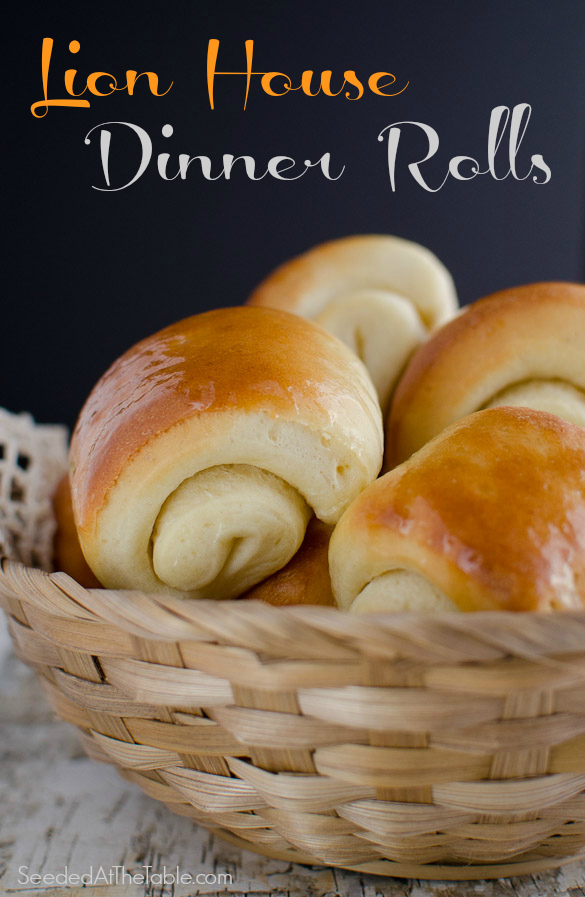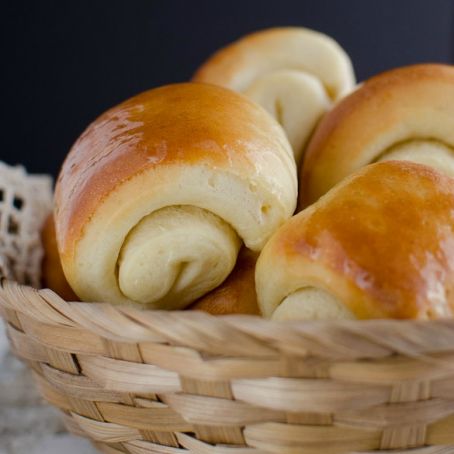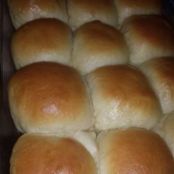Lion House Dinner Rolls
By gordanas
Ingredients
- 2 tablespoons active dry yeast
- 2 cups warm water
- 1/3 cup sugar
- 1/3 cup butter, softened
- 1 egg
- 2 1/2 teaspoons salt
- 2/3 cup nonfat dry milk
- 5-6 cups flour
Details
Servings 24
Level of difficulty Average
Cooking time 12mins
Cost Average budget
Preparation
Step 1
In a large bowl, combine the yeast and water. Let stand 5 minutes (no need to do this if using instant yeast – just add the yeast and water together with the other ingredients). Add sugar, butter, salt, dry milk, 2 cups flour and egg. Beat together until very smooth. Add remaining flour gradually (about 1/2 cup at a time) until a soft but not sticky dough is formed. Knead the dough for at least five minutes if using an electric mixer and for at least 10 minutes if mixing the dough by hand. When the dough is smooth, supple and elastic, place it in a lightly greased large bowl covered with greased plastic wrap and let it rise until doubled.
Step 2
Separate the dough into two portions. Roll each section out to an 11X14-inch rectangle. Brush the top with melted butter. Using a pizza cutter or sharp knife, cut the dough into two pieces, the long way (see photos below). Then slice the dough into five or six strips across so you end up with 10 to 12 small rectangles. Roll each small rectangle up like a snail and place on a silpat-lined or lightly greased baking sheet with the roll resting on it’s open edge. Repeat with the second portion of dough.
Step 3
Cover the rolls with lightly greased plastic wrap and let them rise until doubled. Bake at 375 degrees for 12-14 minutes until they are nicely browned.
The recipe calls for active dry yeast. I always use instant yeast because that’s what I have on hand. To use instant yeast, cut down the amount of yeast to 1 1/2 tablespoons and then there is no need to proof the yeast in the water. Instead, add the yeast and water together with the following ingredients in the recipe and proceed with the directions.
Also, I always used to roll the dough into three circles and cut the rolls into triangles and roll up like crescents; however I saw this tutorial online and it has changed how I roll them out. Feel free to check out the video. I also included a few step-by-step photos below the recipe.
Also, as with all yeast doughs, I never use the flour amount called for in the recipe as a hard fast rule (unless a weight measure is given and then I pull out my kitchen scale). Because humidity, temperature, altitude and a multitude of other factors can impact how much flour you need in your yeast doughs, I always judge when to quit adding flour by the texture and look and feel of the dough rather than how much flour I’ve added compared to the recipe. This tutorial on yeast may help identify how a perfectly floured dough should be.
Lastly, I often use half to 3/4 finely ground white whole wheat flour with good results - and sometimes I get crazy and use 100% whole wheat flour (always finely ground white wheat) but the bread is a bit more dense with 100% whole wheat flour. If using part or all whole wheat flour, add a few minutes to the kneading time to help develop the gluten.
You'll also love
-
 Dinner Rolls - Bread machine
4.2/5
(107 Votes)
Dinner Rolls - Bread machine
4.2/5
(107 Votes)
-
 Homemade Dinner Rolls
0/5
(0 Votes)
Homemade Dinner Rolls
0/5
(0 Votes)



Review this recipe